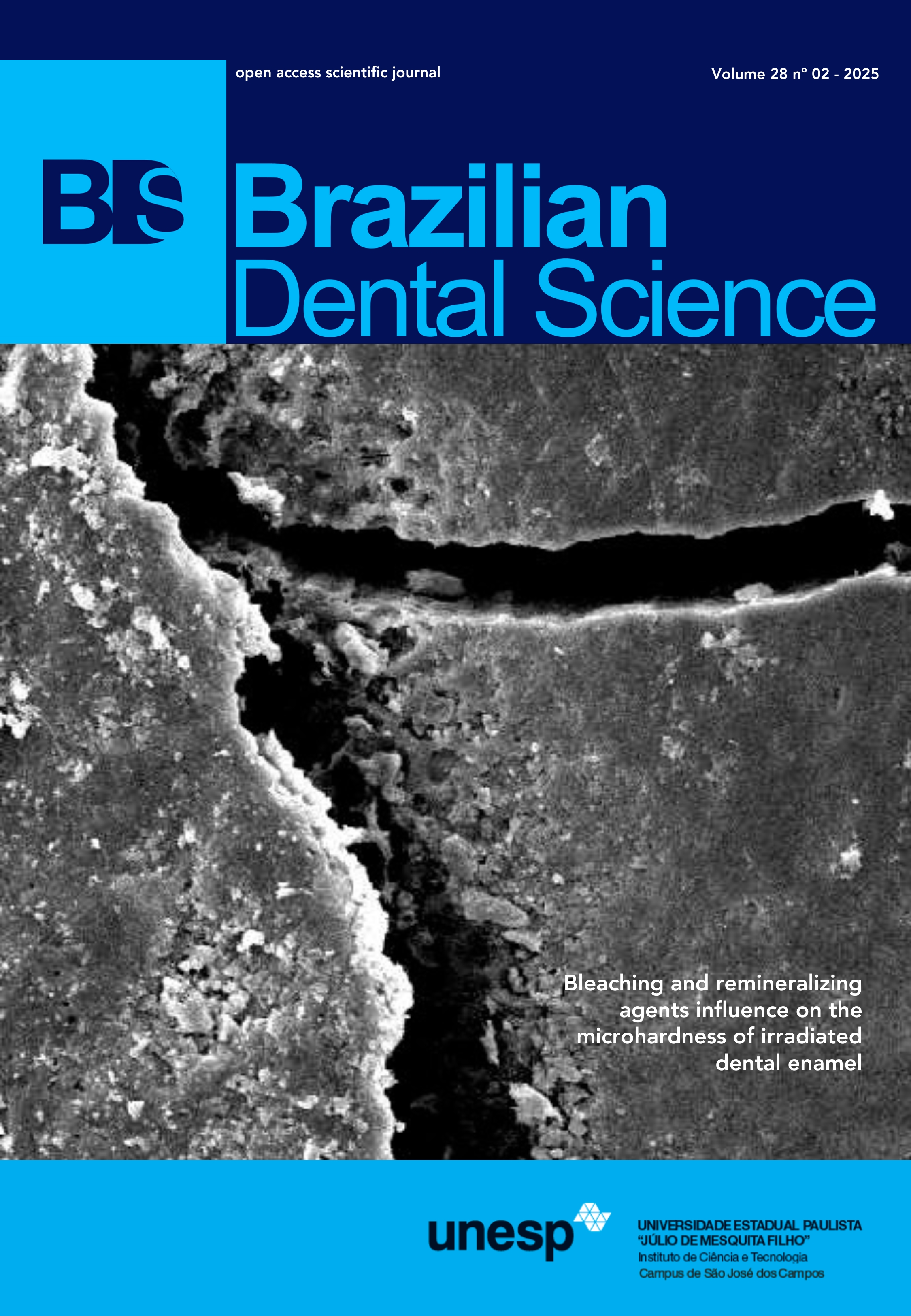Dental anxiety and oral health-related quality of life among pregnant women: a cross-sectional study
DOI:
https://doi.org/10.4322/bds.2025.e4586Abstract
Objective: This study investigated the association between dental anxiety and oral health-related quality of life (OHRQoL) among pregnant women; Material and Methods: A cross-sectional study was conducted with pregnant women who attended public health services in a Southern Brazilian city. A questionnaire was administered to collect information on demographic, socioeconomic, and behavioral factors. The OHRQoL was measured using the Oral Health Impact Profile (OHIP-14). The Dental Anxiety Scale (DAS) was used to assess the level of dental anxiety. Dental caries was assessed by the Decayed, Missing, and Filled Surfaces (DMFS) index and gingivitis was evaluated by the Gingival Bleeding Index (GBI). Poisson regression models assessed the association between dental anxiety and OHIP-14 scores. The results are presented as Ratio Ratio (RR) using its respective 95% confidence intervals (CI); Results: The sample comprised 256 pregnant women. The mean total OHIP-14 score was 8.74 (± 9.00). The average scores from specific domains ranged from 0.66 (functional limitation) to 2.20 (psychological discomfort). Pregnant women with dental anxiety (DAS $\geq$ 15) have 36% higher OHIP-14 scores (RR 1.36; CI 95% 1.02-1.78) showing poorer OHRQoL. Besides, participants with gingivitis have also higher OHIP-14 scores (RR 1.34; CI 95% 1.00-1.78); Conclusion: The present study showed that pregnant women with dental anxiety and those with gingivitis were more likely to report a poorer OHRQoL.
KEYWORDS
Dental anxiety; Observational study; Oral health; Pregnant women; Quality of life.
Downloads
Published
How to Cite
Issue
Section
License
Brazilian Dental Science uses the Creative Commons (CC-BY 4.0) license, thus preserving the integrity of articles in an open access environment. The journal allows the author to retain publishing rights without restrictions.
=================




























